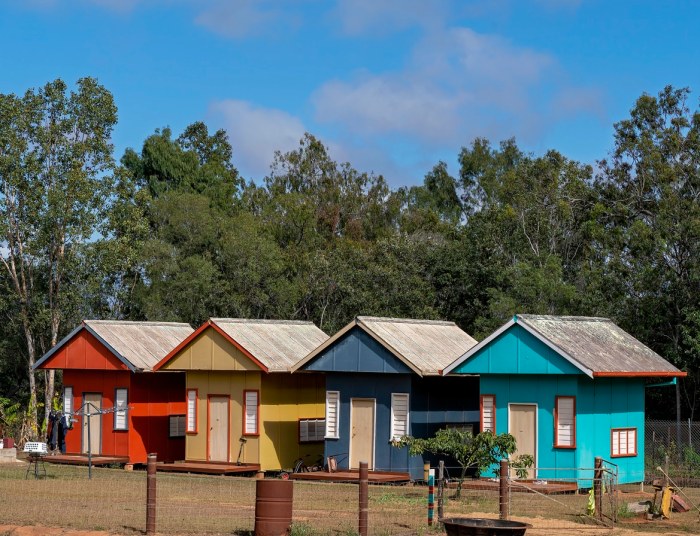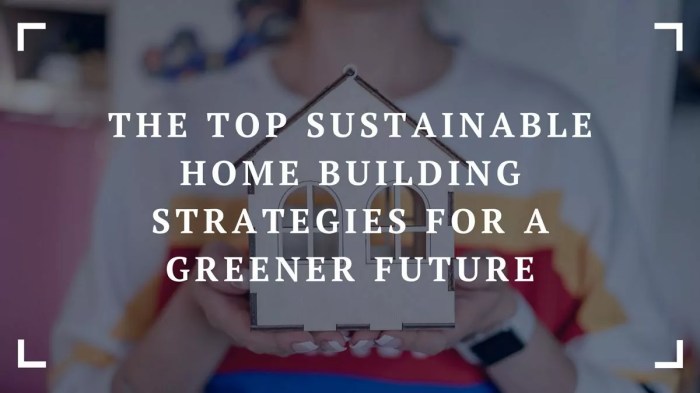Sustainability Focus in Fine Homebuilding: Building for the Future
Exploring the realm of Sustainability Focus in Fine Homebuilding unveils a world where eco-friendly practices meet architectural innovation. From sustainable design principles to energy-efficient systems, this topic delves into the importance of building homes that not only last but also protect the environment for generations to come.
Importance of Sustainability in Fine Homebuilding
Integrating sustainability practices in fine homebuilding is crucial for the environment, homeowners, and the construction industry as a whole. By focusing on sustainability, builders can reduce the environmental impact of their projects, improve energy efficiency, and create healthier living spaces.
Key Benefits of Sustainability in Construction Industry
- Reduction of carbon footprint through the use of renewable energy sources such as solar panels and geothermal heating.
- Conservation of natural resources by utilizing sustainable materials like reclaimed wood, recycled steel, and low VOC paints.
- Lower operating costs for homeowners due to improved energy efficiency and durability of sustainable building materials.
Examples of Sustainable Materials and Methods in Fine Homebuilding
- Structural Insulated Panels (SIPs) made from recycled materials for superior insulation and reduced energy consumption.
- Rainwater harvesting systems to collect and reuse water for irrigation and non-potable uses.
- Green roofs with vegetation to improve air quality, reduce urban heat island effect, and enhance aesthetic appeal.
Sustainable Design Principles

When it comes to fine homebuilding, incorporating sustainable design principles is crucial for creating environmentally friendly and energy-efficient homes. By focusing on sustainable design, builders can reduce the environmental impact of construction and operation of homes while also improving overall comfort and quality of living.
Energy Efficiency through Sustainable Design
One key aspect of sustainable design is enhancing energy efficiency in homes. This can be achieved through various methods such as proper insulation, high-efficiency HVAC systems, and using energy-efficient appliances. By reducing energy consumption, homeowners can lower their utility bills and minimize their carbon footprint.
- Proper insulation: By ensuring that homes are well-insulated, builders can reduce heat loss in the winter and heat gain in the summer, leading to lower energy usage for heating and cooling.
- High-efficiency HVAC systems: Installing HVAC systems that are energy-efficient can significantly reduce energy consumption while maintaining a comfortable indoor temperature.
- Energy-efficient appliances: Choosing appliances with high energy efficiency ratings can further lower electricity usage in homes, contributing to overall energy savings.
Natural Lighting and Ventilation in Sustainable Design
Incorporating natural lighting and ventilation into the design of homes is another important aspect of sustainable design. By maximizing natural light and airflow, homeowners can reduce the need for artificial lighting and mechanical ventilation, leading to energy savings and improved indoor air quality.
- Maximizing natural light: Designing homes with large windows, skylights, and light tubes can help maximize natural light, reducing the need for artificial lighting during the day.
- Promoting natural ventilation: Implementing strategies such as cross ventilation, operable windows, and ceiling fans can enhance natural airflow within homes, reducing the reliance on mechanical ventilation systems.
Sustainable Material Selection

When it comes to fine homebuilding, the selection of materials plays a crucial role in sustainability. Choosing environmentally friendly materials not only reduces the environmental impact of construction but also contributes to the overall health and well-being of the occupants.
Comparison of Traditional vs. Sustainable Materials
Traditional building materials such as concrete and steel have long been the go-to choices in construction. However, these materials have significant environmental drawbacks, including high carbon emissions and resource depletion. On the other hand, sustainable alternatives like bamboo, reclaimed wood, and recycled materials offer a more eco-friendly option with lower embodied energy and reduced waste generation.
Innovative Approaches to Sourcing
- Local Sourcing: Opting for locally sourced materials helps reduce transportation emissions and supports the local economy.
- Recycled Content: Incorporating recycled materials like glass, metal, and plastic into construction not only diverts waste from landfills but also conserves natural resources.
- Cradle-to-Cradle Certification: Choosing materials with Cradle-to-Cradle certification ensures that they are produced sustainably and can be safely recycled or composted at the end of their life cycle.
- Natural Finishes: Utilizing natural finishes such as clay paints and linseed oil reduces indoor air pollution and promotes a healthier living environment.
Energy-Efficient Systems and Technologies
When it comes to sustainable fine homebuilding, incorporating energy-efficient systems and technologies is crucial in reducing environmental impact and lowering utility costs.
Energy-Efficient Appliances
Energy-efficient appliances play a significant role in sustainable homes by consuming less energy compared to traditional models. This not only reduces electricity consumption but also decreases greenhouse gas emissions.
- Energy Star-certified appliances are a popular choice for sustainable homes, as they meet strict energy efficiency guidelines set by the U.S. Environmental Protection Agency.
- Investing in high-efficiency HVAC systems, refrigerators, washing machines, and dishwashers can lead to substantial energy savings over time.
Smart Home Technologies
Smart home technologies are revolutionizing energy efficiency in sustainable homes by allowing homeowners to monitor and control their energy usage more effectively.
- Smart thermostats enable users to regulate heating and cooling based on occupancy patterns, leading to reduced energy waste.
- Lighting systems equipped with motion sensors and programmable schedules help optimize energy consumption by automatically adjusting brightness levels.
- Home energy monitoring systems provide real-time data on energy usage, empowering homeowners to make informed decisions to improve efficiency.
Waste Reduction and Recycling Practices
Reducing waste and promoting recycling practices in fine homebuilding projects is crucial for minimizing environmental impact and conserving resources. By incorporating sustainable practices, builders can contribute to a more eco-friendly construction industry.
Benefits of Incorporating Recycled Materials
Utilizing recycled materials in construction processes not only reduces the demand for new resources but also helps in diverting waste from landfills. Incorporating recycled materials like reclaimed wood, recycled glass countertops, or repurposed metal fixtures can add unique character to a home while reducing the environmental footprint of the project.
Strategies for Waste Reduction
- Implementing a waste management plan to properly sort and recycle construction waste.
- Optimizing material usage to minimize excess waste during the building process.
- Donating usable materials to organizations or individuals in need instead of discarding them.
- Using prefabricated components to reduce on-site waste generation.
Creative Repurposing of Construction Waste
Repurposing construction waste can lead to innovative design solutions and reduce the environmental impact of a project. Creative ways to repurpose construction waste include using leftover wood for custom furniture pieces, turning old windows into greenhouse structures, or transforming scrap metal into decorative accents for the home.
Embracing creativity in repurposing waste not only reduces landfill waste but also adds a unique touch to the final design.
End of Discussion

In conclusion, Sustainability Focus in Fine Homebuilding is not just a trend but a necessity in today's construction industry. By prioritizing sustainability, we pave the way for a greener future where homes are not just structures but symbols of responsible living.
Q&A
How can sustainable design enhance energy efficiency in homes?
By incorporating features like passive solar design and energy-efficient appliances, sustainable design can significantly reduce energy consumption in homes.
What are some innovative approaches to sourcing sustainable materials for construction?
Some innovative approaches include using recycled materials, sourcing locally to reduce transportation emissions, and exploring new eco-friendly materials like bamboo and recycled glass.